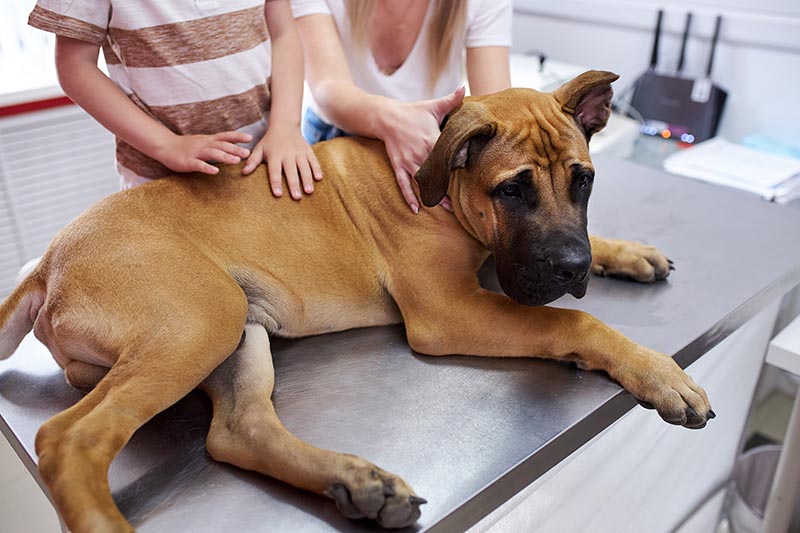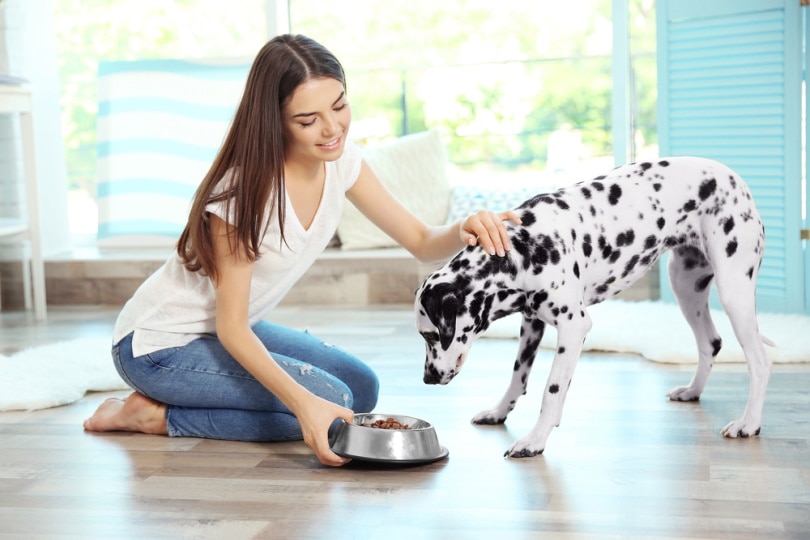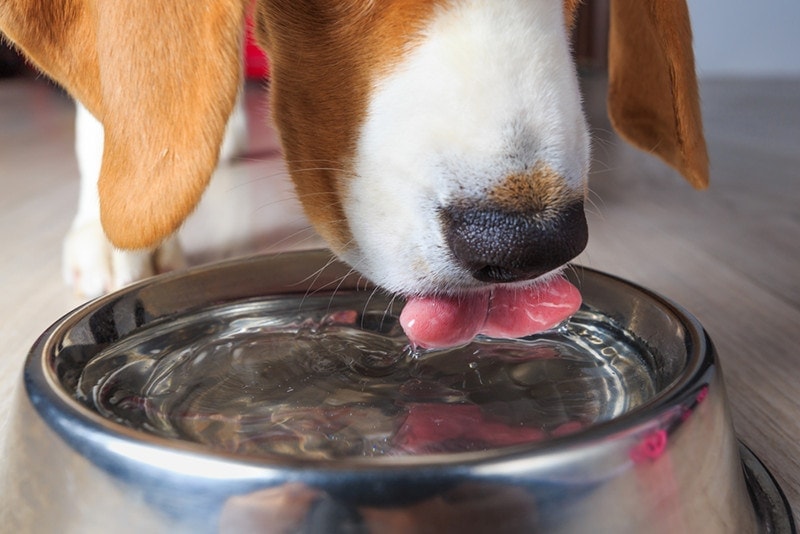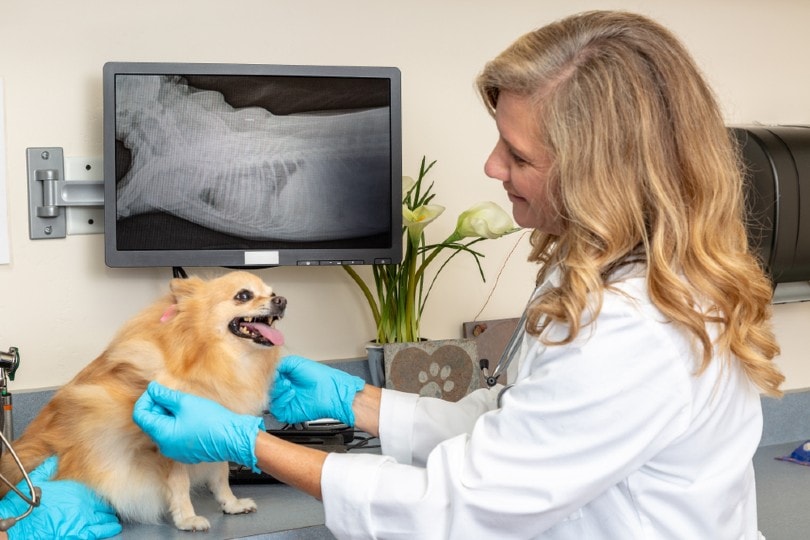
Click to Skip Ahead
One of the most important—and terrifying—parts of owning a dog is looking out for illness and injury and doing our best to prevent them where we can. Although most diseases are impossible to predict or avoid, there are many that we can tackle more effectively when armed with the right information.
Kidney stones can affect a number of species, including dogs, cats, and humans, and in many cases, they can be managed, or even avoided, by following some basic rules. However, there are factors that may make some individuals more susceptible than others. In this article, we will explore kidney stones in dogs; what they are, how they form, how they are treated, and how we might prevent them.

What Are Kidney Stones?
When we talk about stones inside the body (e.g. gallstones, bladder stones, kidney stones), we are referring to byproducts of metabolism that solidify firstly into crystals, sediment, or sludge, then gradually accumulate into larger solid “stones.” They occur when there is disease, abnormalities, or inflammation in the organ in question. In the case of kidney stones (more technically referred to as nephrolithiasis), they may form as a result of infection, chemical imbalances in the blood or urine, congenital defects, or breed predisposition.

What Types of Kidney Stones Are There?
There are multiple types of kidney stones, made up of different chemical structures and substances. The most common are:
These are also the most commonly encountered types of bladder stones with the same predisposing factors.
How Common Are Kidney Stones?
Probably much more common than we realize. Bladder stones and crystals are relatively common problems seen in dogs, but kidney stones are actually rarely diagnosed and often just seen as an incidental finding on X-rays. The reason for this is that bladder stones usually cause obvious signs such as hematuria (blood in the urine), difficult or painful urination, or they may obstruct the urethra and prevent urination completely.
Kidney stones, by comparison, rarely result in clinical signs unless they occur with, or as a result of, a concurrent urinary tract problem or migrate into the ureter, causing a painful obstruction.
It is likely, however, that a dog with bladder stones may also have kidney stones.

What Are the Signs of Kidney Stones?
Around 90% of the time, there will be no signs at all that your dog has a kidney stone, or the signs seen are due to infection or stones in the bladder.
Signs of kidney stones may include:
What Causes Kidney Stones?
The cause of kidney stones in dogs will depend on the type of stone. Struvite stones usually form as a result of infection, diet or alkaline urine (urine should normally be slightly acidic). Calcium oxalate stones can form when dogs are fed diets that are too high in calcium, but there is also a genetic predisposition in the breeds mentioned above. Urate stones are typically only seen in Dalmatians or dogs with portosystemic shunts that are unable to metabolize uric acid. These factors lead to the accumulation of material in the urine which can solidify into stones.

How Are Kidney Stones Diagnosed?
As previously mentioned, kidney stones are often only diagnosed as an incidental finding when radiographs are taken of the abdomen, sometimes for a problem that is completely unrelated! In these cases, the presence of the stones is noted, but treatment is not necessarily needed.
If there are signs of bladder stones or kidney stones, a complete urinalysis should be performed to assess:
Most kidney or bladder stones are visible on X-rays but some will not show up on a normal X-ray. If stones are suspected, your vet may perform additional imaging tests such as ultrasound or X-rays with air or contrast material in the bladder to highlight stones that do not show up on plain X-rays.
Imaging is a vital part of the diagnostic process in order to distinguish between stones or other urogenital problems such as bladder cancer, prostate disease in male dogs, or infection of the uterus (pyometra) in non-spayed female dogs. It will also help determine how the stone should be treated.
Blood tests should be performed to assess kidney and liver function in any dog with suspected kidney or bladder stones. Stones may cause problems with kidney function, and abnormal liver function tests could indicate a portosystemic shunt (urate stones).

How Do We Treat Kidney Stones?
1. Managing Underlying Conditions
In the majority of cases, kidney stones are monitored rather than treated, and a review of the dog’s diet is performed to help eliminate any problem foods. They should be able to get an idea of what type of stone they are dealing with and how best to manage them by examining other risk factors:
Are there crystals in the urine? If so, what type are they?
Some types of crystals and stones can be dissolved using specialized diets. Others (particularly Calcium oxalate) will not dissolve, but a targeted diet can help reduce further growth and formation of stones.
As cystine stones are almost exclusively found in entire males, castration (either surgical or chemical) is indicated in dogs with this sort of crystal or stone.
Infection
If infection is present, it is essential that appropriate antibiotics are used to treat this. Urinary tract infections can lead to the formation of more stones, and infection in the kidneys can be life-threatening.
Addressing any abnormalities on blood tests
It is vital to assess liver and kidney function in dogs with kidney stones. Kidney damage caused by stones may only be temporary if steps are taken to manage the problem. If a portosystemic shunt is suspected, this will require much more extensive testing and treatment.
Hydration
Encouraging dogs to drink plenty of water and/or feeding more wet food to help hydrate and flush out the kidneys is an important part of treating and preventing stone formation.

2. Surgery
Surgical intervention for kidney stones is only recommended if there are signs of an obstruction in the ureter, which is rare. Initially, treatment with pain relief and intravenous fluids may be used to see if the stone will move down into the bladder where it can be more safely removed, but if this is not successful, there are a number of techniques available to remove the stone:

Frequently Asked Questions (FAQs)
Can I Stop My Dog Getting Kidney Stones?
There’s no foolproof way to prevent kidney stones, but there are a few steps you can take to reduce the risks, particularly if you have a breed of dog that is predisposed to bladder and kidney stones.
Hydration is key, so always ensure that your dog has access to clean, fresh drinking water.

How Do I Get My Dog to Drink More Water?
You know what they say about leading a horse to water? Well, the same is true for dogs. While we may not be able to make them drink, there are a few things we can do to ensure they are getting enough. Some dogs are quite particular about their drinking bowls, so here are a few handy tips to encourage your dog to quench their thirst:
My Vet Found a Kidney Stone on My Dog’s X-ray but Said It’s Nothing to Worry About. Shouldn’t They Remove It?
Because most kidney stones are asymptomatic, removing them is only recommended if they cause problems. However, being aware of their presence means you can introduce some changes that may shrink or dissolve the stones or reduce the risks of more forming and becoming a problem. Talk to your vet about urine tests to get more information so you can make sure you are feeding them the right things.


Conclusion
Kidney stones are a rarely encountered problem in dogs, though they may actually occur more frequently than we realize. This is because, fortunately, it is quite uncommon for kidney stones to cause problems, and they are more often an incidental finding. If the stones move into the ureter, they can cause painful and dangerous obstructions that will require urgent intervention.
We may not be able to prevent all kidney stones, but by being aware of the predisposing factors (urinary tract disease, breed, sex) we can implement strategies to reduce the risk of them forming.
We cannot possibly hope to know everything about every illness that might affect our dogs, but the more we learn, the better we become at recognizing signs of disease and discovering how best to diagnose, treat, and even prevent them.
Featured Image Credit: Alexander Hagseth, Shutterstock








